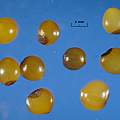Quote from: Diane Whitehead on May 12, 2024, 12:03:08 PMIf I want some, I'll buy some bulbs.
I once read that someone had taken five years to grow a lily from seed, "Hah what a mug I will buy some bulbs" I thought. It took my bulbs over 10 years to vanish, never flowering. That's a thing with bulbs, they can go backwards.

